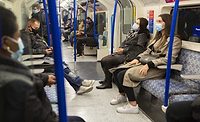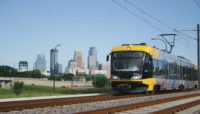Women and girls using public transport in Scotland adapt their behavior in order to feel safe.
A new report commissioned by Transport Scotland revealed that female passengers mainly used buses and trains to travel and public transportation was viewed as an “essential and affordable way to achieve independent social mobility,” according to the report. However, women commented they felt safer traveling during the day and during the week as opposed to at night or on the weekend.
The report also stated female passengers were less likely to use buses and trains at night because of the risk of waiting along in the dark due to delays or cancellations. Instead, the women and girls opted to travel via taxi, Uber or private vehicle.
Some other main concerns highlighted included lighting and lack of staff. The report stated that female passengers said well-lit and staffed stations made them feel the most comfortable when traveling alone as well as familiarity with routes, drivers and fellow passengers.
“During our research, women and girls told us they shoulder significant responsibility for adapting their own behavior to try to ‘be’ and ‘feel’ safe on public transport,” said Transport Minister Jenny Gilruth. “They are often in a constant state of vigilance, particularly at night time, and as a result end up changing their plans — only travelling at certain points of the day or not using public transport altogether. This is simply not acceptable in 21st century Scotland.”
The report offered these 10 recommendations:
- Raise awareness of what technology is currently available to assist women and girls, and explore means to make it more accessible.
- Gather and share best practices in relation to options for ensuring the safe return home of transport workers at night, with a review of measures and resources in place.
- Strengthen existing rules around alcohol consumption on public transport and at points of interchange, including penalties for non-compliance.
- Develop credible and accessible information and guidance regarding what to do and who to contact if passengers feel threatened or unsafe or if they are a victim.
- Introduce systems for regular monitoring, reporting and upgrading of lighting and communications systems for all transport services.
- Explore feasibility of increasing staff presence across the transport network.
- Map and improve existing reporting protocols and develop more consistent and transparent systems for reporting and recording incidents.
- Implement more robust procedures and standard practice for following-up with transport staff and users who report negative incidents to the authorities.
- A comprehensive review of staff training on both their own safety and how to protect passengers.
- Further targeted research, consultation and training specifically with drivers of public transport, to explore their own fears in relation to protecting those on-board services.
“We will now work with transport operators and stakeholders to carefully consider these recommendations and how we can implement them quickly and effectively, to ensure our transport network is safer and more secure for all who use it,” Gilruth said.




